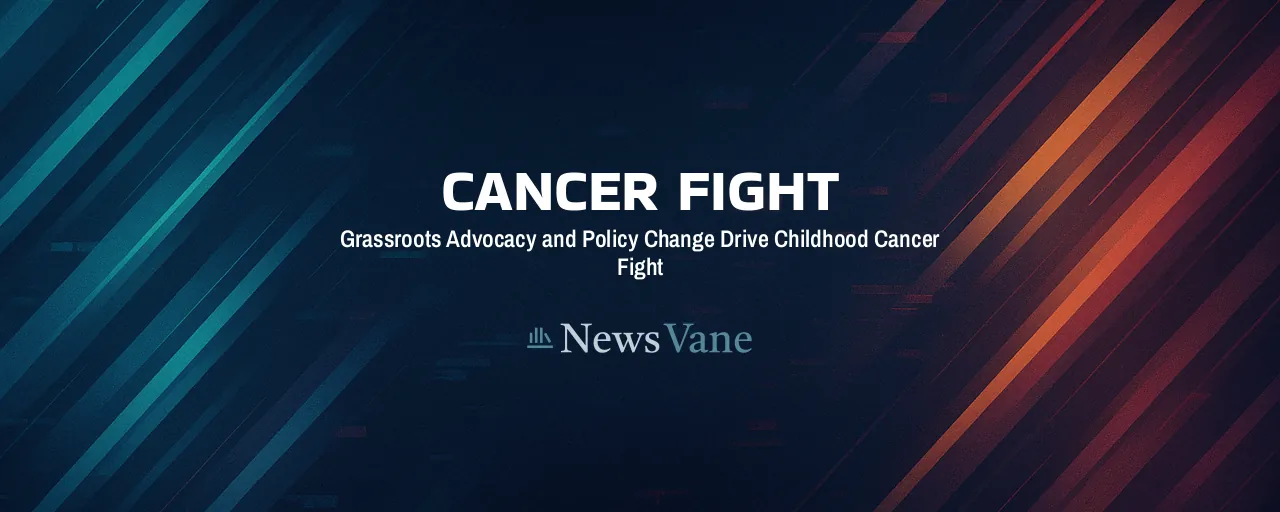From Survivor to Advocate
Hannah Adams, a young woman from Alabama who beat childhood cancer, has channeled her experience into a remarkable mission. Starting at age eight, she began raising funds to help others facing the disease, a journey that has since touched countless lives. Alabama Governor Kay Ivey recently met with Adams and her family, praising her dedication to supporting children with cancer. Their discussion underscores a rising wave of community-driven efforts to tackle this pressing issue.
Adams' story carries deep meaning. It reflects a growing trend where individuals, particularly young people, take bold steps to address health challenges. Her work combines fundraising, policy advocacy, and direct family support, resonating with those who value grassroots solutions alongside broader systems. This personal commitment fuels an inspiring, practical movement.
Driving Change With Impact
Through her nonprofit, Helping U Get Stronger (H.U.G.S.) 4 Childhood Cancer, Adams has raised over $30 million for research grants. Her advocacy has shaped laws like the STAR Act and RACE for Children Act, expanding access to cutting-edge treatments. By engaging over 150 congressional offices, she has secured nearly $100 million in state research funding across seven states, proving her influence extends far beyond Alabama.
On the ground, Adams' organization delivers care packages to families and leads campaigns like Gold Together to raise awareness. Partnerships with universities and health departments amplify her efforts, creating a blueprint for blending high-level policy with local support. Her ability to bridge these worlds makes her initiative a powerful example for others.
The Power of Community Action
Adams' work taps into a broader movement where private philanthropy and local efforts drive progress against childhood cancer. Many highlight the success of nonprofits and voluntary groups, citing campaigns that have funneled hundreds of millions into pediatric oncology. Initiatives like Oncothon and research alliances, such as the Children's Cancer Therapy Development Institute, show how private donors and biotech firms can spark innovation.
Local governments are also playing a role. City leaders proclaim Childhood Cancer Awareness Months, fund health monitoring systems, and back youth-led philanthropy grants. These actions reflect a shared belief that solutions tailored to local needs can create lasting change. Adams' ability to rally grassroots and institutional support highlights the strength of this approach.
Weighing Different Paths Forward
While Adams' initiative thrives on community and private support, others emphasize the need for robust government involvement. Advocates for universal healthcare argue that federal programs ensure fair access to early diagnosis and specialized care. They point to countries like Indonesia and Ghana, where such systems cut treatment abandonment and boosted survival rates. Bills like the Comprehensive Cancer Survivorship Act aim to strengthen Medicaid for pediatric survivors, tackling disparities in underserved areas.
The shared aim is clear, ensuring better lives for children with cancer. Private efforts bring speed and innovation, while public systems offer broad access. Adams' work connects these perspectives, blending fundraising with policy advocacy to maximize impact. Her approach shows how collaboration can address complex challenges effectively.
Pageants as Platforms for Change
As Miss Phenix City, Adams has used her title to amplify her cause, part of a wider shift where beauty pageants double as advocacy platforms. Titleholders often champion issues like pediatric cancer, raising funds for hospitals and securing awareness proclamations. This evolution, built on decades of pageant reform, lets winners leverage media and corporate ties for social impact.
For Adams, the pageant stage is a powerful tool. Her storytelling connects with audiences, inspiring volunteers and donors. This creative approach appeals to young people, who are increasingly drawn to unique ways to drive social change, proving advocacy can flourish in unexpected spaces.
A Future Built on Collaboration
Hannah Adams' journey shows what one determined person can achieve. Her work, raising millions and shaping policy, offers hope to families and advocates alike. Yet it also prompts bigger questions about how to best support children with cancer. Finding the right balance between private innovation and public investment remains critical, but Adams' example points to a collaborative path forward.
Across the nation, communities are responding. Youth-led philanthropy and local health policies are gaining traction, driven by a shared commitment to care. These efforts suggest a future where children facing cancer have stronger support networks, thanks to advocates like Adams who light the way.
The fight against childhood cancer continues, grounded in real progress. From a young survivor's nonprofit to city-led initiatives, every step forward counts. Adams' work is a reminder that change, however daunting, begins with people who care enough to act.
